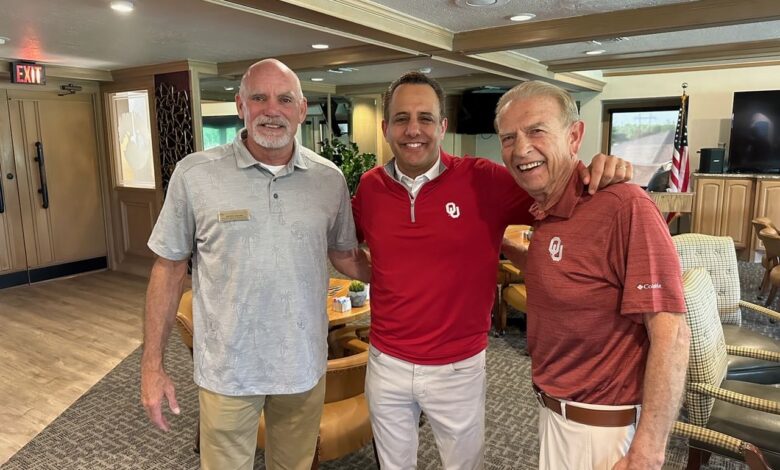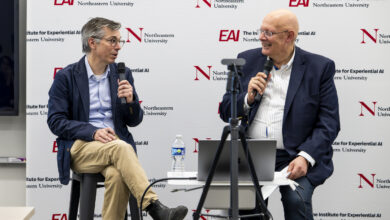Artificial intelligence is No. 1 on OU’s academic agenda

NORMAN —Artificial Intelligence (AI) did not come out of the blue.
Universities have been involved in developing the technology for decades, but now that it’s here, schools across the country are on a mad dash to embrace it, harness it and control it.
University of Oklahoma President Joseph Harroz Jr. said issues surrounding AI are No. 1 on OU’s academic agenda, and there is a university-wide push underway to figure out how it can be used in the classroom, in the laboratory and in the studio.
“We saw it coming, but I think all of us were surprised at how quickly it moved,” Harroz said after a presentation on Thursday to the Norman Business Association. “It’s not a fad. It’s 100% here to stay, and now that it’s in the world, we have to address it, and we’ve got to have a strategy for how we handle it. And we’re working on that right now.”
The term, AI, describes a wide range of computer technologies that can perform complex tasks that, traditionally, only humans could do, such as reasoning, making decisions, solving problems, learning, and other functions.
The applications are unlimited, ranging from art to healthcare to every discipline on campus, Harroz said.
“This is the beginning of a full transformation, no different than when personal computers came out in the ’80s. Just take the research component. What AI can do for research is fundamentally transformative.”
AI came into the mainstream so quickly that all universities are scrambling to get a handle on how they will manage the technology, he said. Though OU will not officially merge with the Southeastern Conference (SEC) until this summer, the university has already joined a consortium of SEC schools to collaborate on AI issues.
No universities have had a chance to take the lead on AI. They are all working together to figure out how to adapt to the technological sea change. And Harroz says OU is not just borrowing ideas from other schools. Other schools are borrowing ideas from OU.
There are still a lot of unanswered questions about how each department, each school and college within the university will adapt to AI, Harroz said. The team is still working out whether to take a centralized or decentralized approach to the technology, but he says OU should have a more developed strategy in place by the time classes start this fall.
David Ebert, associate vice president for research and partnerships, said OU’s transition to AI was underway four years ago and momentum is continuing to build as AI opens the door to more complex, multidisciplinary projects involving enormous volumes of data.
OU researchers are accelerating and expanding AI capabilities to help tackle new research questions in areas such as medicine, public health, meteorology, and sociology. Projects can generate so much data that it would be difficult to analyze without the application of artificial intelligence.
“AI is a key component in bringing all the information together,” he said.
Every department within the university is looking at how to use AI tools, how to teach students and how to build AI into their curriculums.
“When ChatGPT first came out, there was a lot of concern among faculty,” Ebert said of the AI-driven, automated writing program. “Then they realized it’s just another tool, like bringing a calculator into the classroom.”
“AI is not always right, and sometimes, it’s not so good, but you have to know how to use it,” Ebert said.
“All of the departments are working to come up with policies and practices, and we have worked with other Big 12 schools and SEC schools to come up with best practices.”
“We’ve made a lot of changes, and the transition is going well.”



